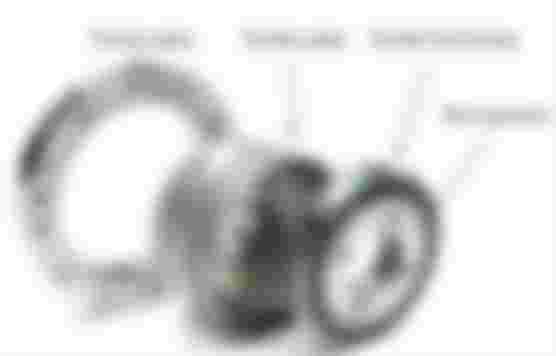Understanding Harmonic Drive Gearboxes

The harmonic drive gearbox selection process necessitates careful consideration of a few essential features of the gearbox. If you'd want to read more about the most important factors to take into account while making your selection, you can do so by clicking here. As a result, we give some guidance on how to select the harmonic drive gearbox that best meets your project's needs. This article will help you find a transmission that not only performs well but one you can also trust in the long run. When shopping for a harmonic drive gearbox at a store like UKHarmonicDrives, consumers have a few duties to keep in mind.
Gear ratios in the gearbox
When discussing gear ratios, people are referring to the total number of teeth on two gears. The number of teeth on the gear should be proportional to the gear's entire circumference, according to normal practice. It is because of this that the gear with a larger diameter will also have a greater number of teeth. A precise gear ratio can be determined by comparing the circumferences of two gears and calculating the relationship between them. In this case, [the cause and effect] if one gear has 36 teeth and the other has just 12 teeth, the gear ratio is 3:1.
Excessive force
The amount of torque that can be generated will be affected by the gear ratio that is chosen. Gear ratios that have many teeth will be necessary if one wants to get significant torque output. With a high gear ratio, the motor's output shaft speed will be slowed down. In contrast, a lower gear ratio would result in a lower system output torque value, but a higher motor speed would be reached at the gearbox's output shaft. Torque and speed are shown to be inversely connected in this statement by showing how they influence one another. This is because the statement demonstrates the interdependence of the two independent variables.
Quickness (RPM)
As the vehicle speeds up, so does the gear ratio. A gear with a bigger number of teeth than another gear will result in a gear with a greater number of teeth than another gear increasing the output shaft's velocity. A slower output shaft speed would be achieved by placing more gear teeth on the output side compared to the input side of the transmission. In most cases, the output speed may be calculated simply by dividing the input speed by the gear ratio. This is a straightforward strategy. The output speed is determined by the ratio, and therefore if the ratio is high, the output speed will be lower.
These gearboxes are also available in helical form
Power consumption and physical footprint are negligible. These include crushers, extruders, coolers, and conveyors, as well as many other low-power or heavy-duty devices. It is a one-of-a-kind product because it functions at a fixed angle, allowing for continuous contact for a predetermined period. Helical gearboxes can also be purchased in a variety of other configurations, including the following options: Coaxial helical inline gearboxes have earned a well-deserved reputation as one of the most sought-after gearbox types due to their high levels of efficiency and specificity. For engineers, optimizing load and transmission ratios is a fundamental objective of their work. With the bevel-helical gearbox, shafts that aren't parallel to one another can produce rotary motion. Gearboxes of this type are most often employed in this manner. In the Centre, some teeth wrap around the conical shape of the surface. This gearbox is recognized for its great stiffness because of its skew-bevel helical structure. Gear and tooth counts can be customized to meet the needs of a particular application.
The use of planetary gearing in transmissions
The input and output shafts of a planetary gear are perfectly aligned. Gearboxes with bevel teeth are also known as bevel teeth. Thus, high torque density can be achieved, which makes it possible to transmit the largest amount of torque in a form that is the most compact. As a result, these transmissions generate approximately three times as much torque as a conventional gearbox. The transmissions' design makes this possible. In addition, they have high efficiency, low mass inertia, and minimal backlash, all of which have won them a lot of attention.
Worm gear reduction transmissions are a popular choice
The worm reduction harmonic drive company gearbox is distinguished by the presence of a large worm wheel that revolves like that of a screw. A higher reduction in speed can be achieved between shafts that do not intersect with one another as a result of this. Although they are among the most powerful gearboxes on the market, they are also some of the least efficient since they are guided by sliding motion rather than rolling action. When using worm reduction gearing, it is critical to select a motor that is powerful enough to handle the load.
Motors, lubrication, and seals come to mind first
This process isn't over yet; there are still a few more stages to be taken into account before the operation is complete. For the most part, manufacturers provide their clients with the option of receiving a pre-lubricated gearbox (for most, the default is to ship units empty and let customers fill them on site.) A vertical shaft down in the application may need the use of an additional set of seals, which some manufacturers recommend. The fact that so many different gearboxes may be connected to a c-frame motor means that many manufacturers offer to integrate the motor and gearbox and ship it as a single unit. There are so many c-frame motor-gearbox connections that this is the most likely explanation. Since there are so many gearboxes in the final product, this is why.
Temperature and other meteorological conditions
Greater ambient temperatures raise the system's internal pressure, which in turn raises the service factor, necessitating a higher service factor. The viscosity of the lubricant and the material from which the seal must be constructed can both change with temperature.
A harmonic drive system must be taken into account in light of the environment in which it will be used. If the component is subjected to difficult conditions, the amount of wear it suffers may be higher. Rust and bacteria growth are common problems in unclean or dusty environments. Hence special materials are often needed to combat these problems. Coatings and oils used in food and beverage manufacturing plants must meet FDA requirements. Vacuum conditions necessitate the use of specific grease and heat dissipation processes because there is no air to cool them. This is because there will be no air to serve as a coolant. Without taking these factors into account, the gearbox chosen may be unable to adequately support the application's demands. Each of these factors must be taken into account to arrive at an accurate gearbox size estimation.
There are a lot of variables to consider when choosing a harmonic drive gearbox. Size, speed, and torque are all important factors to keep in mind while deciding on a motor. In addition, the setting in which the gearbox will be put to use must be considered. Something of importance should not be ignored. Consider that the gearbox will be employed in a dirty or dusty environment, in which case you must make sure it is made to withstand those conditions. This is since the gearbox will be employed in those conditions.
